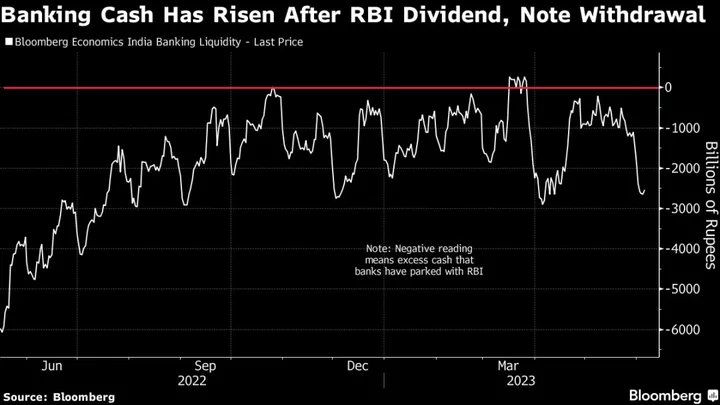The Reserve Bank of India intensified its operations to remove cash from the banking system, showing it wants to keep liquidity tight to rein in inflation.
The central bank said Tuesday it drained 323.8 billion rupees via a 3-day reverse repo auction at a cutoff rate of 6.49%. That was after it drained a combined 1.2 trillion rupees over two previous occasions this month.
The central bank’s actions suggest it doesn’t want to ease up in its fight against inflation until price gains are firmly under control. Even though inflation has eased in recent months, it still remains above the 4% mid-point of the central bank’s target range.
“The reverse repo announcement is in line with RBI’s stated stance of withdrawal of accommodation,” said Naveen Singh, head of trading at ICICI Securities Primary Dealership Ltd. “There will be be no slack until the job is finished on the inflation target.”
The central bank’s efforts to remove short-term funds from the system comes amid a jump in excess banking cash after the withdrawal of high-value banking notes and a dividend payout by the RBI to the government. The RBI’s foreign-exchange operations, where it buys dollars to soak up foreign inflows, may also be adding to liquidity.
The RBI will maintain adequate liquidity in the banking system, Governor Shaktikanta Das said last month, without specifying any amount.
The RBI drained 508.7 billion rupees from the banking system on June 2 through a 14-day reverse repo auction, and it removed another 666.4 billion rupees via a four-day operation on June 5.
“The markets will focus more on the RBI’s commentary on liquidity, with durable liquidity having increased sharply,” said Suvodeep Rakshit, a senior economist at Kotak Institutional Equities.
(Adds auction results in the second paragraph)









